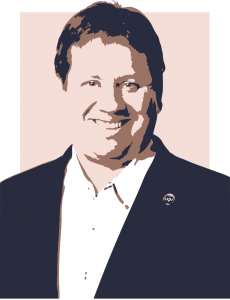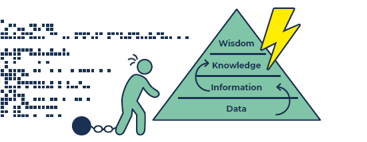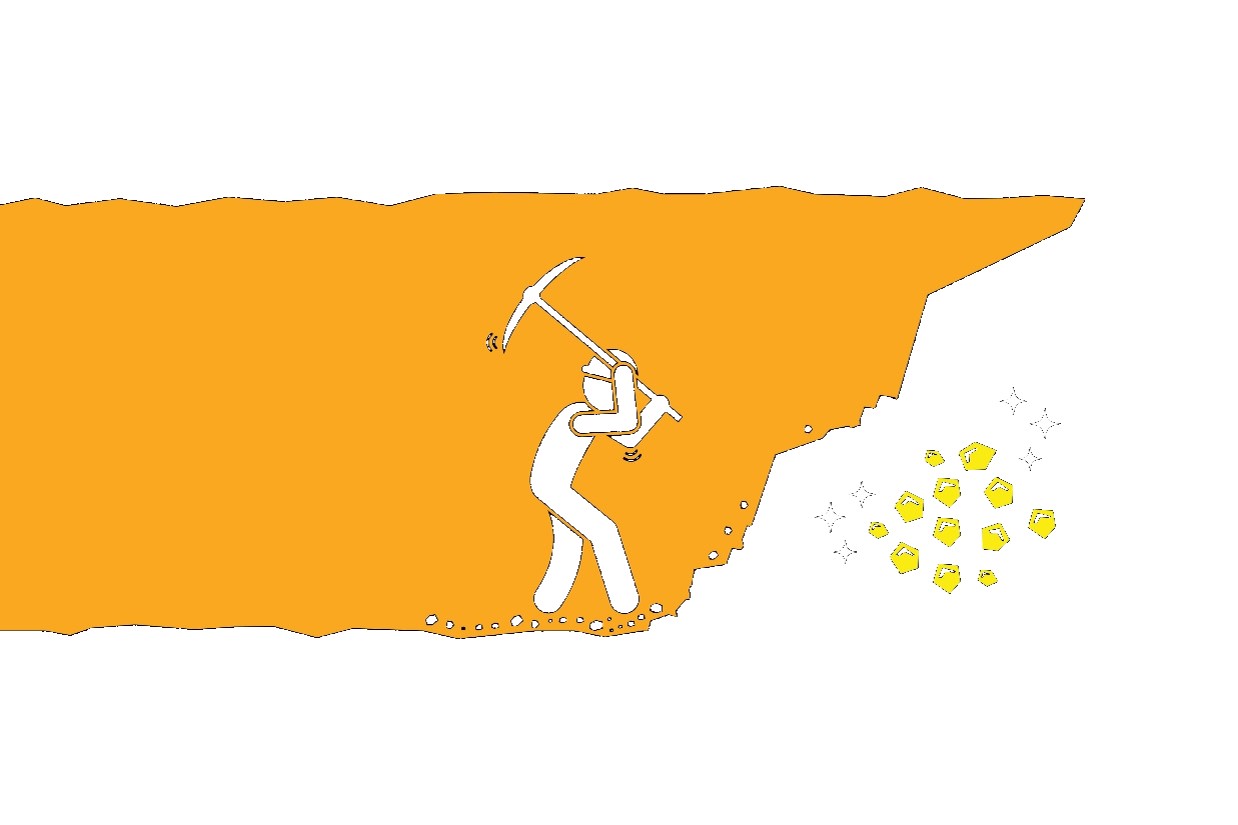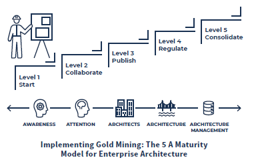Do you build it based on data or do you let data build it?
Data Architecture is THE current big hype. It is not only the hot topic of the IT department but has made it to one of the first priorities of the business. This is based on the meanwhile common understanding that the true company gold resides in data, today produced in large amounts along the company’s value chain activities. It acts as a “liver ticker” of the company. We recognize that data analysis indicates the path to a better company which successfully survives in the market with innovative initiatives.
The “traditional” organisational architecture of data is structured into collection, transformation, distribution, and consumption of it. Meaningless to say to insurance industry representatives, that management also must satisfy regulatory demands in order to remain compliant to industry standards. And there is the rub: data becomes the master and our role is degraded to a slave who is digging for its gold, caged in rigid structures. The magical question: How can we flip this situation by 180°, enabling us to innovate and renew the company and its ecosystem? Or, in other words: How can we change from construction workers to architects of this “New Gold”?
About Peter Lieber

As Parallel Entrepreneur, his company initiatives Sparx Systems CE, Sparx Services CE / Switzerland, LieberLieber Software and ThreatGet offer innovation driven information technology, enabling a 360° management of business, applications and infrastructure. Peter is President of the Austrian Trade Organisation (österreichischer Gewerbeverein).
.
“I work from the inside out.”
Why we got stucked when digging for gold.

When digging for data gold, we currently analyse data to gain information and build patterns, to measure relevance for the business. In the 80ies, the DIKW Pyramid (“data – information – knowledge – wisdom”) described a framework for knowledge management, highlighting the importance of the structural and functional relationship of it. The purpose behind is to gain a deeper understanding of subjects in question. The DIKW pyramid climbs from data to information, which allows to understand relations. Reaching for higher, we try to understand the patterns so we gather knowledge out of this information and turn it into actions of “better” and “more of the same”. We are pretty good with this discipline. New technologies such as artificial intelligence are supporting us.
So far for to the current state of the “New Gold”. But we start to realize that we get stuck because it makes us a slave to our data. We currently follow the process of data – information – knowledge, which is a cumbersome activity, tied to technical and organisational hurdles. Following this current standard, we let data build the gold. We are not in the position to mirror and build the relations between the patterns on a 360° perspective.
But the original concept of the knowledge management pyramid raises for more: Wisdom, because only Wisdom is the concrete to build sustainable innovations upon. Only by understanding the principles, we shift data insight from knowledge to the top. But how to determine the principles so we can cross this line?
Escape from the data slavery: Breaking out from the bottom, taking the view from the wisdom top.

Taking the view from the wisdom top means to flip the pyramid by 180°. Focus first is the activity needed to achieve this fresh and novel view. It means becoming the architect (master) and build gold out of data. Golden is the answer to the questions raised by various stakeholders in the company. But first, we need to understand which information is relevant and therefore worth the knowledge.
How to achieve this turn-around? With my long (and often also painful) innovation experience in technology, I came to the point where I understood the benefits of becoming an architect. In this role, you focus on the model as the first step of the process. In the sequence, it allows you to bring data and information together for a holistic view and understand the company’s concrete to build innovation upon.
”Architecture is not so much a knowledge of form, but a form of knowledge.”
How to become the architect: 5 A’s to combine Data and Information and raise the 5 levels of Gold Mining
Firstly, it is crucial to understand that we do not model the data as such. We manage the architecture of it.
As mentioned as key activity to reach wisdom, FOCUS is it. Awareness and then attention allows us to start properly. Collaboration is key as we all know. And with collaboration, we as model experts understand it in a way which means reaching out to a much larger community than just IT and its nerds. It includes all stakeholders within the company, ideally the entire ecosystem. Because then you come to the point to publish knowledge for a broader and higher purpose. The top is reached by consolidation. It means, bringing together data, process, and infrastructure in one holistic piece, allows a 360° perspective, combining company assets with the relevant data. It means to reach the wisdom for sustainable innovation initiatives.

Get the most out of your gold as an architect for an innovative, yet unknown future built on data.
The past times has shown us even more, how the future is volatile, uncertain, complex, ambiguous, a VUCA world. So the call for us innovators is lauder than ever. Let’s shape the industry’s future with wisdom.
“As an architect you design for the present, with an awareness of the past, for a future which is essentially unknown.”
